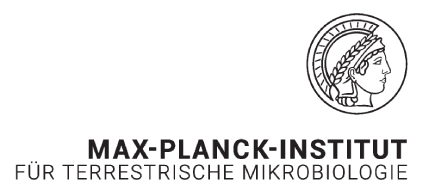Main Content
Control of chloroplast gene expression
Jan Schuller, Felix Willmund, Clara Schilling
Research question
How does the plastid transcription apparatus react to changing environmental conditions and stress, what role do PEP-associated proteins (PAP) play?
Background
The control of gene expression plays an important role in stress responses, although the adaptation of chloroplastid gene expression to environmental changes is still poorly understood. The photosynthetic apparatus is organised via multiprotein complexes, some of which are encoded in the chloroplast or nucleus. Plastid-encoded genes in C. reinhardtii are transcribed by the plastid-encoded RNA polymerase (PEP). PEP-associated proteins (PAPs) activate the complex in a light-dependent manner and lead to the formation of a biomachine with a size in the megadalton range.
In plants, some of these PAPs carry an additional nuclear localisation signal and could therefore regulate both plastid and nuclear functions. An exciting aspect of such dual localisation would be the coordination of gene expression between the nuclear and chloroplast genomes. However, it remains to be shown whether PAPs have a function in the nuclear gene expression of C. reinhardtii and in what way they could modulate the expression of plastid genes under stress conditions and whether even small molecules, such as alarmones, play a role in this.


